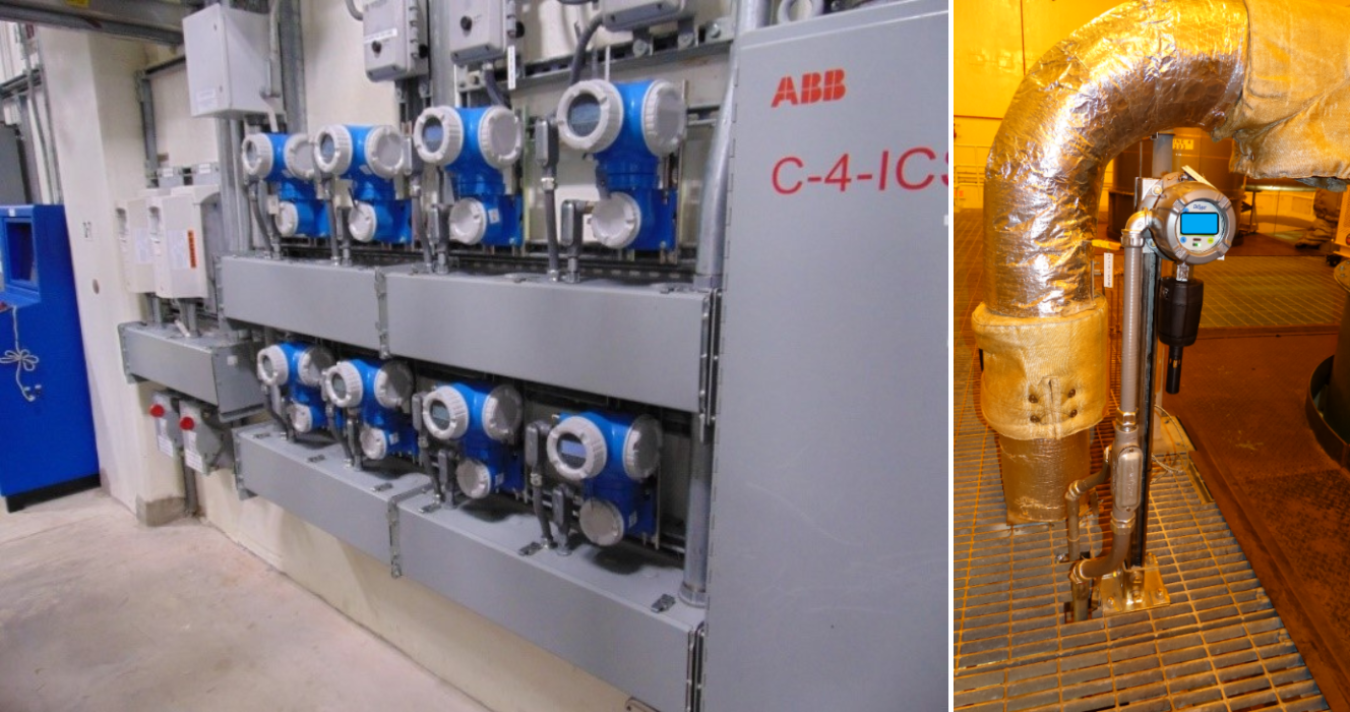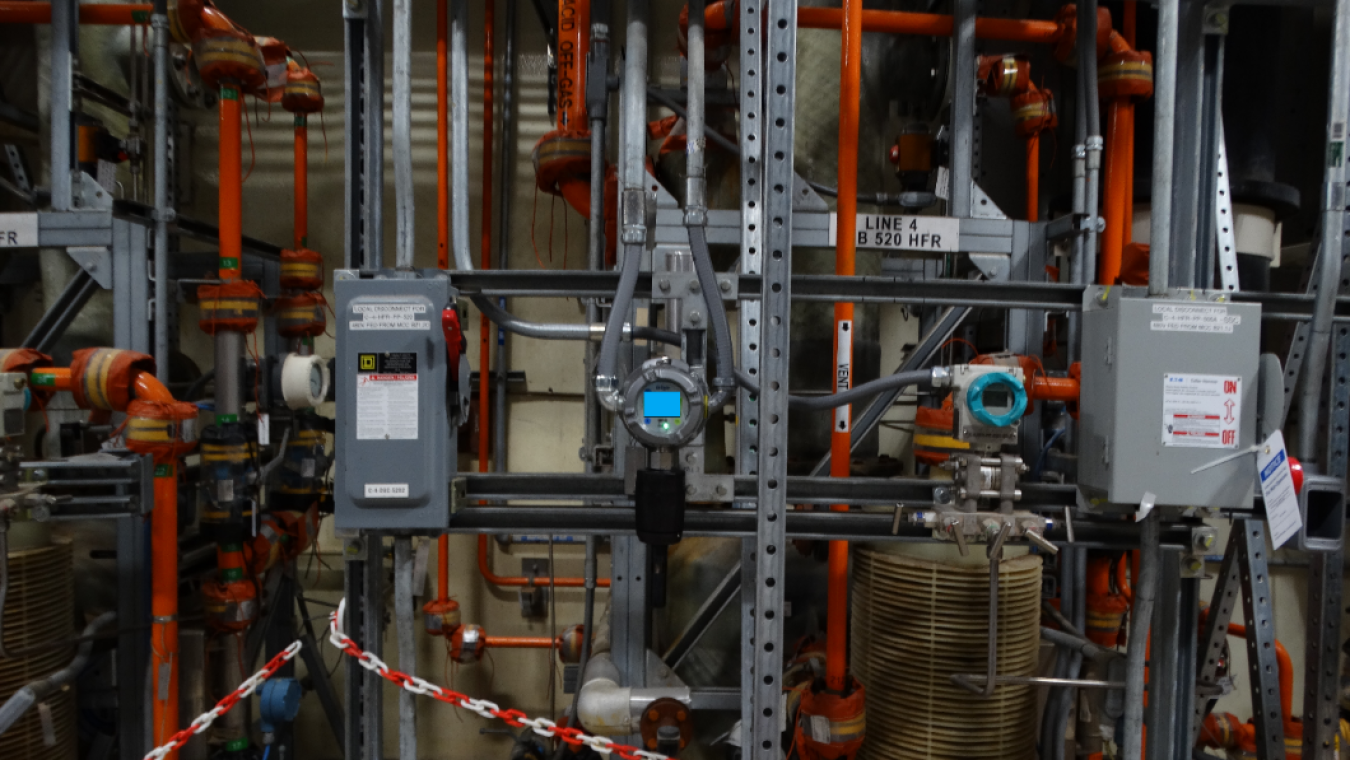Recent upgrades to EM’s facilities that convert depleted uranium hexafluoride (DUF6) to more stable compounds for reuse or disposal are delivering improved safety, reliability, operational efficiency and cost-effectiveness.
Office of Environmental Management
October 17, 2023
LEXINGTON, Ky. – Recent upgrades to EM’s facilities that convert depleted uranium hexafluoride (DUF6) to more stable compounds for reuse or disposal are delivering improved safety, reliability, operational efficiency and cost-effectiveness.
New industrial controls — including state-of-the-art gas-flow meters and hydrogen-fluoride detection systems — are part of ongoing and planned improvements at EM’s two DUF6 conversion plants near Portsmouth, Ohio and Paducah, Kentucky.
Joel Bradburne, manager of EM’s Portsmouth/Paducah Project Office (PPPO), said several additional equipment upgrades to both DUF6 conversion facilities are planned to further increase operational reliability, efficiency, throughput and worker safety in coming years.
“Plant upgrades will shave years off the time it would otherwise take to achieve disposition of this country’s DUF6 inventory,” Bradburne said. “And more importantly, they will help protect our workers and the environment in and around the conversion facilities.”
EM designed and built the unique conversion plants, first commissioned in 2010 and 2011, to address the Cold War environmental legacy of more than 700,000 metric tons of DUF6 that accumulated over more than five decades at U.S. gaseous diffusion plant (GDP) sites.
Uranium hexafluoride (UF6) is the compound from which fissionable uranium isotopes are separated and concentrated by gaseous diffusion to enrich uranium. Precise measurement of depleted UF6 gas fed into the conversion process is vital for maintaining optimal plant operation, according to Dutch Conrad, president of Mid-America Conversion Services (MCS), DUF6 operations and maintenance contractor.
“It helps maintain correct stoichiometry (relative chemical balance), resulting in superior oxide products today — and setting the stage for future advancements,” he said.
The new rotational-equilibrium flowmeters replaced the original thermal-dispersion mass flowmeters installed during plant construction, Conrad said. In addition to improved accuracy, the new flowmeters provide additional valuable data, such as gas density, that can greatly assist in troubleshooting process-related issues. And more efficiency upgrades are coming, he added.
“With additional efforts such as powder sampling and process optimization, the potential for achieving even higher plant throughput becomes a realistic possibility,” Conrad said.

The DUF6 plants also rely on dependable hydrogen fluoride (HF) detection systems. A co-product of the conversion process, HF is a potential health and safety hazard if released. To address concerns regarding reliability and nuisance alarms with the plants’ original HF detectors, MCS installed new electrochemical-cell toxic gas detectors.
As a result, process disruptions have decreased while earlier HF detection has been enabled. Existing automatic-shutdown features remain in the event of a considerable HF release in the conversion system, so the recent upgrades add another layer of safety, Conrad said.
-Contributors: Kearney Ackermann, Brad Mitzelfelt
To receive the latest news and updates about the Office of Environment Management, submit your e-mail address.

